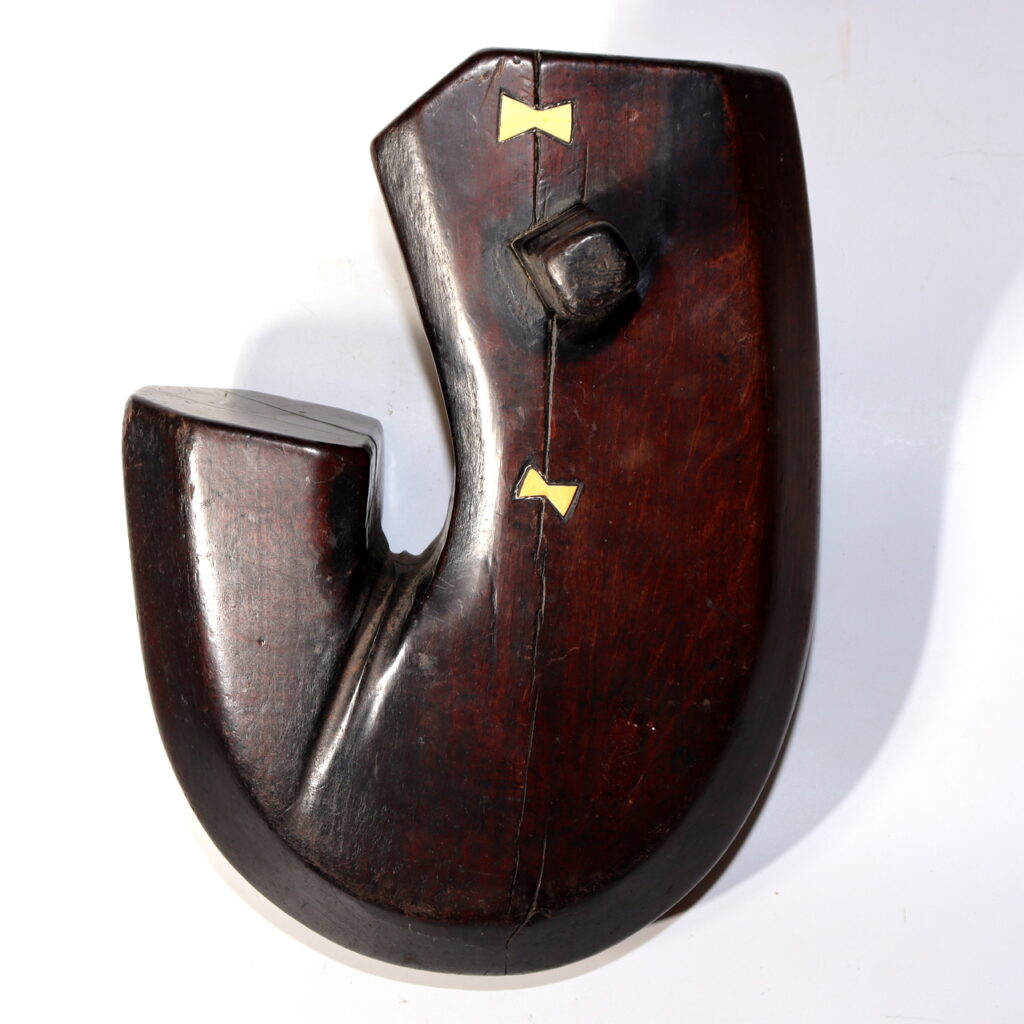
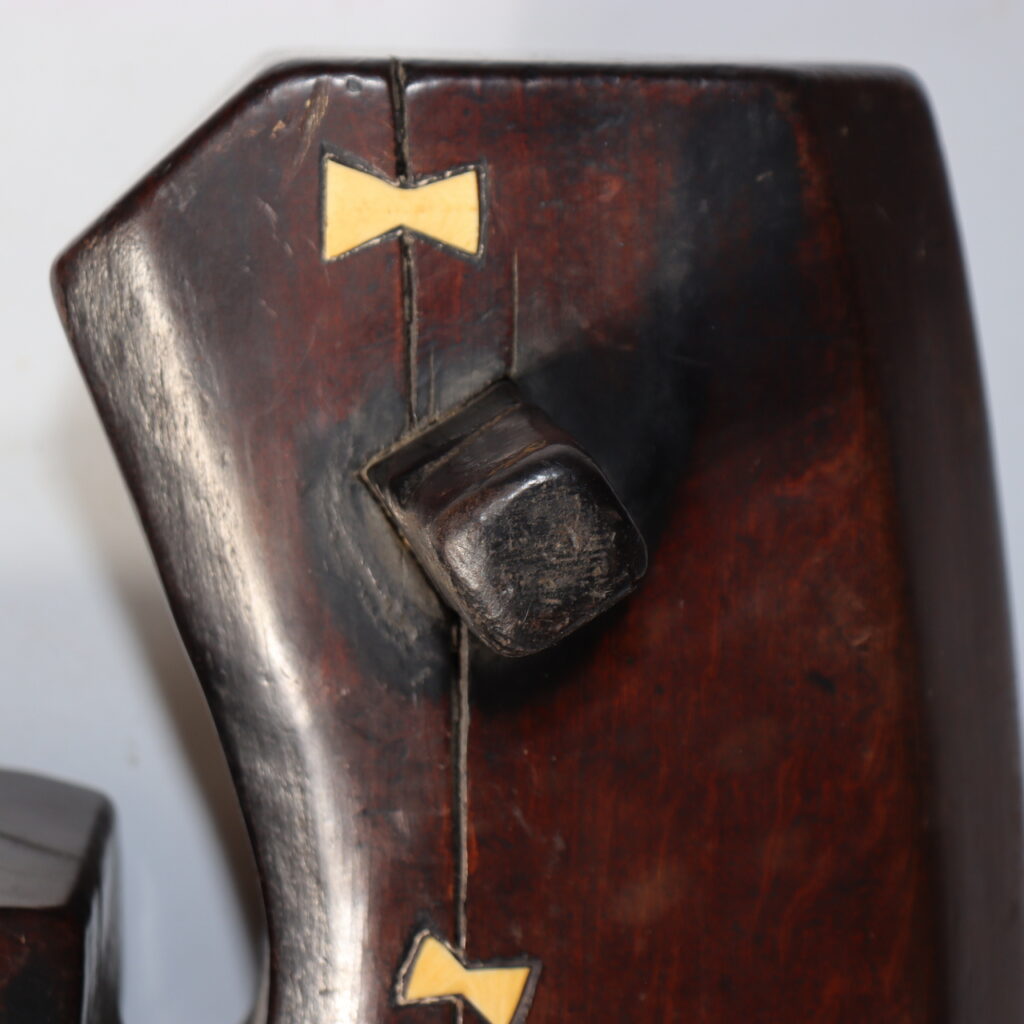
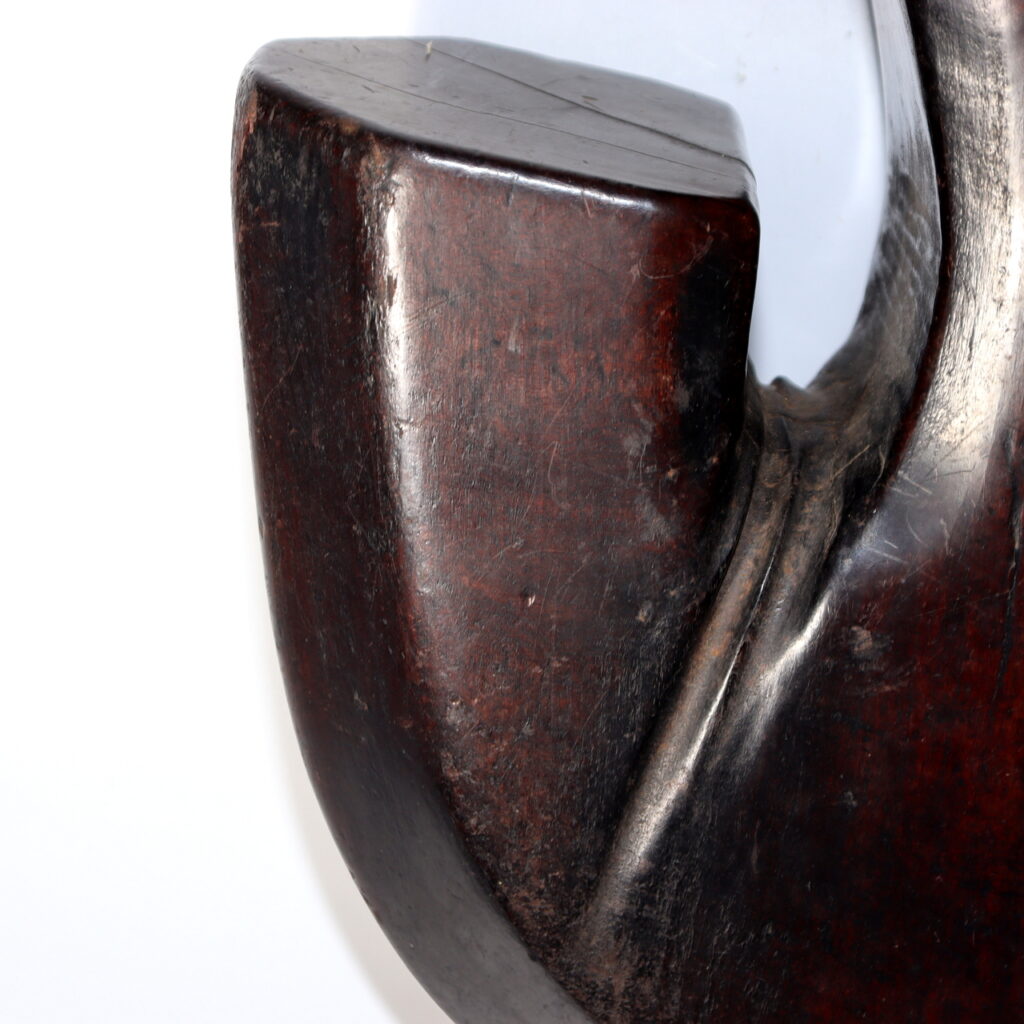
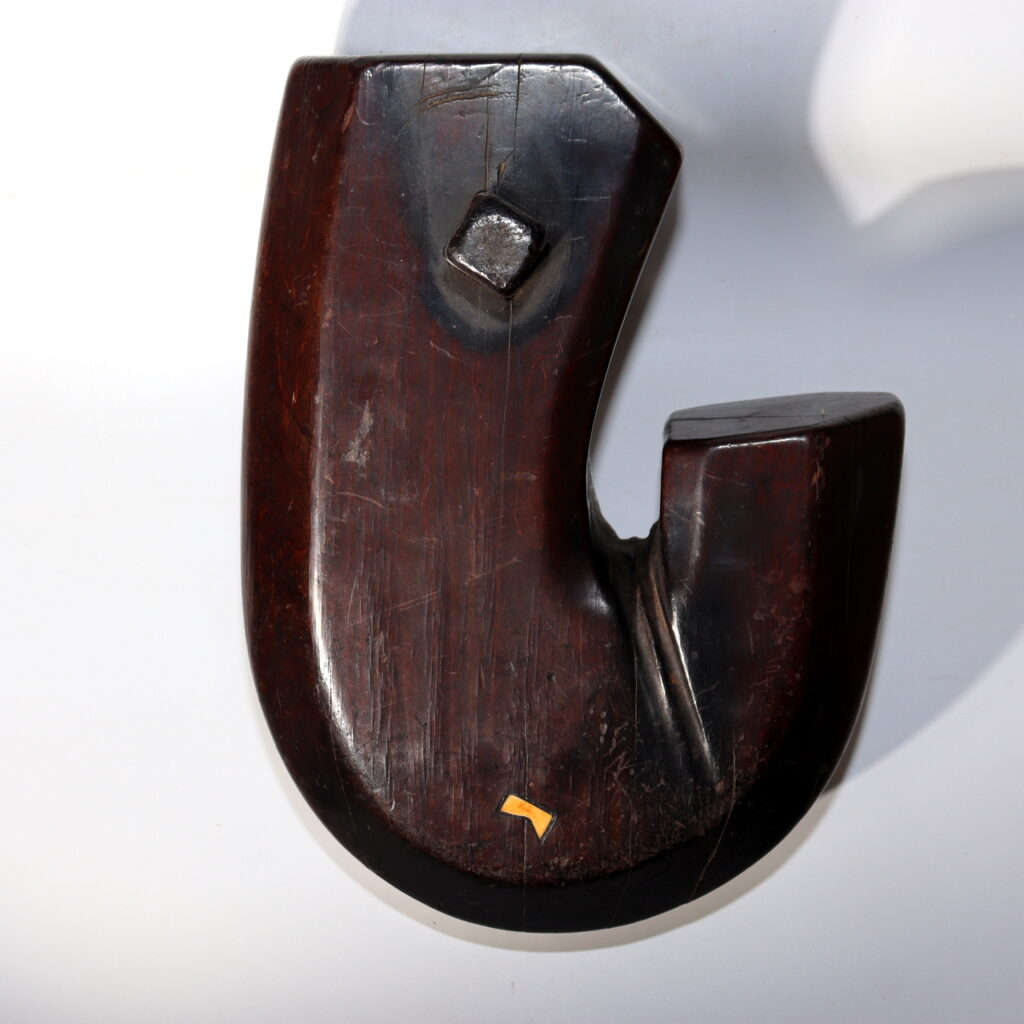
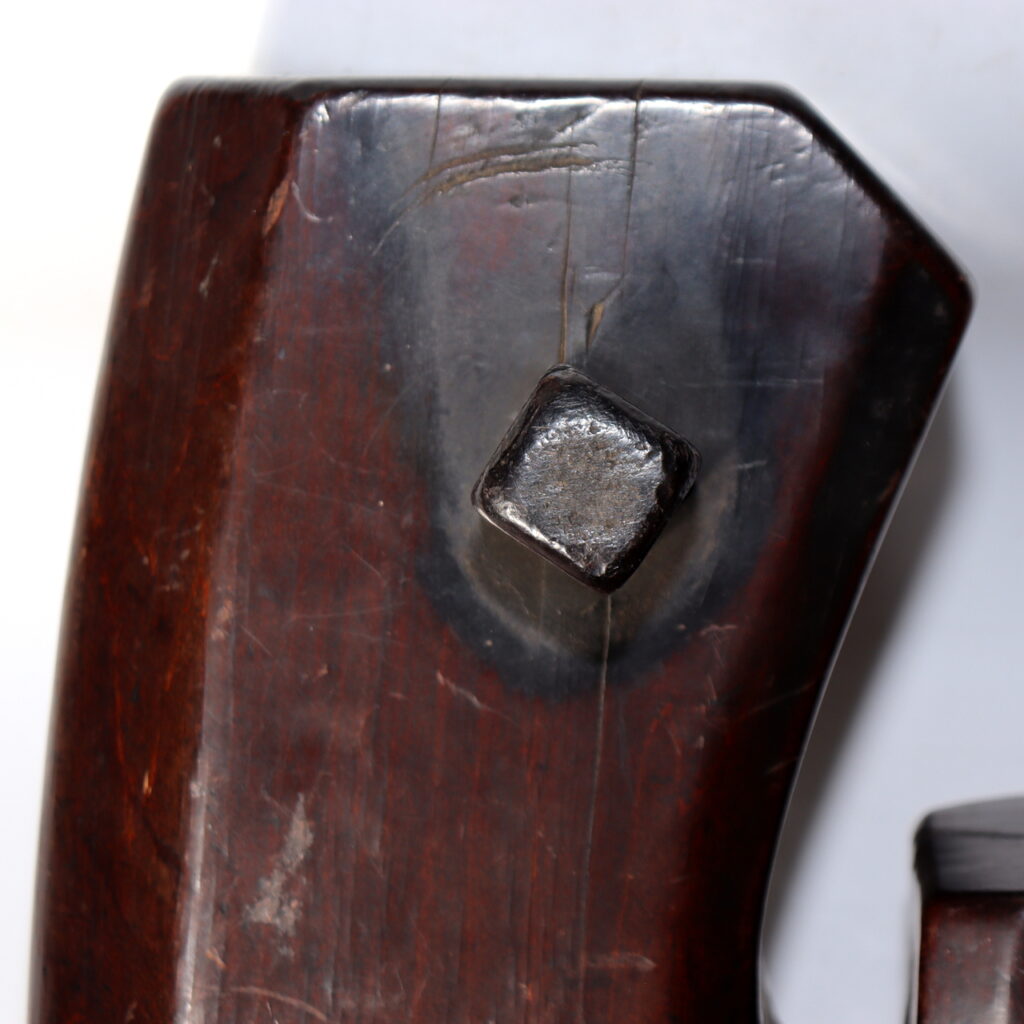
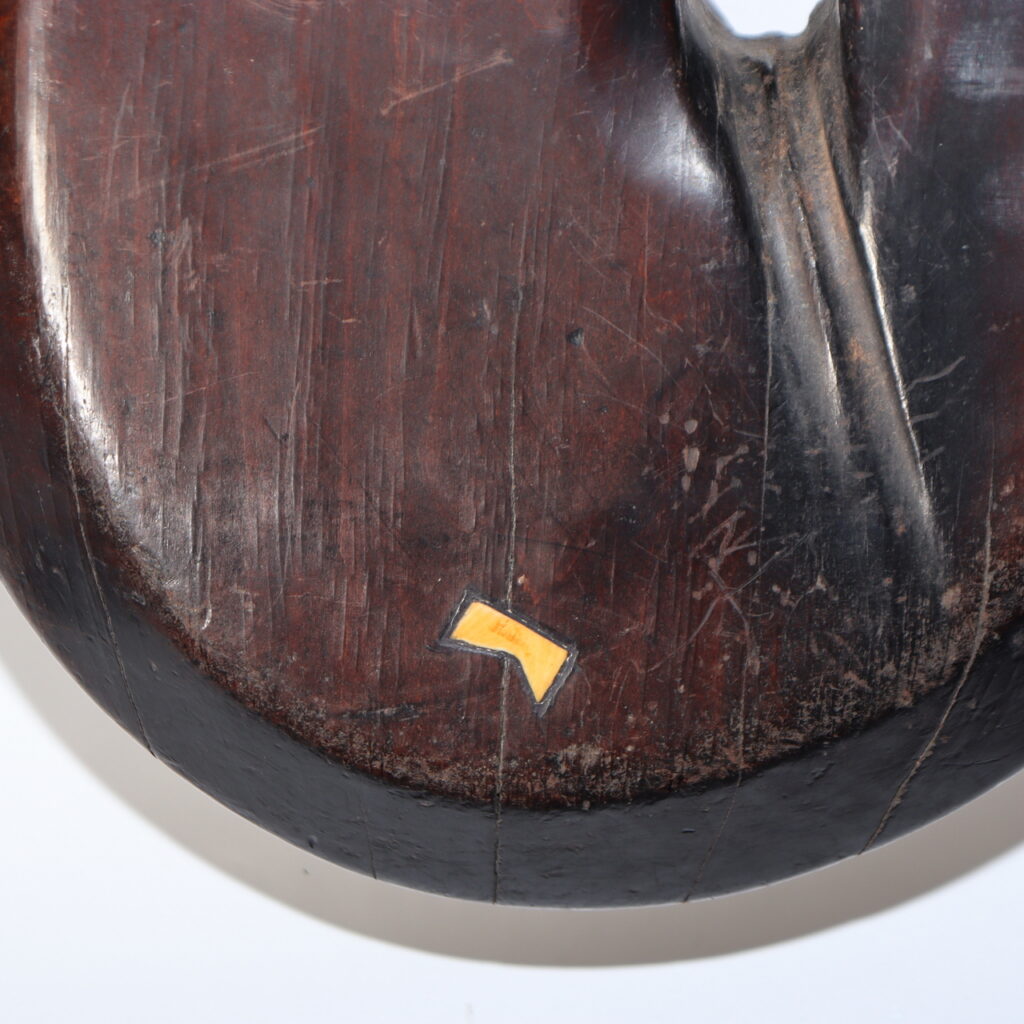
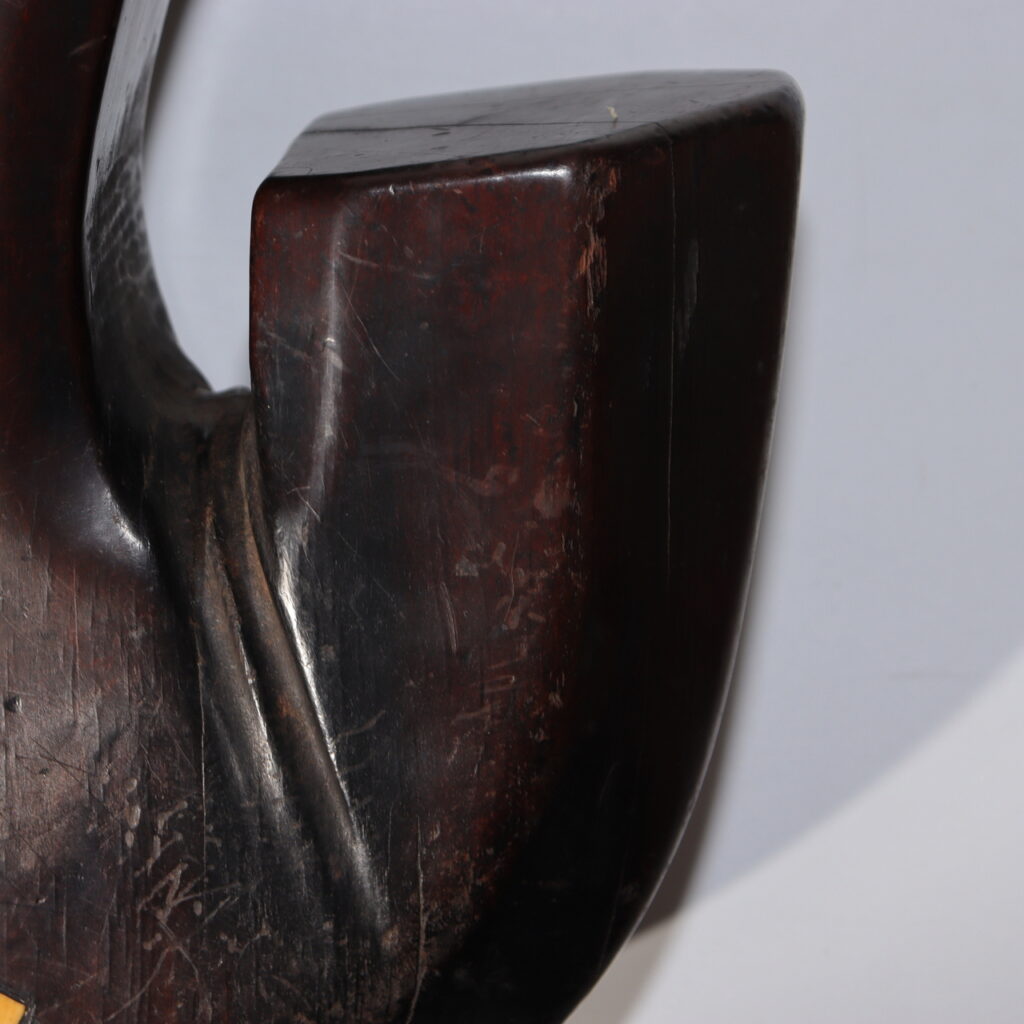
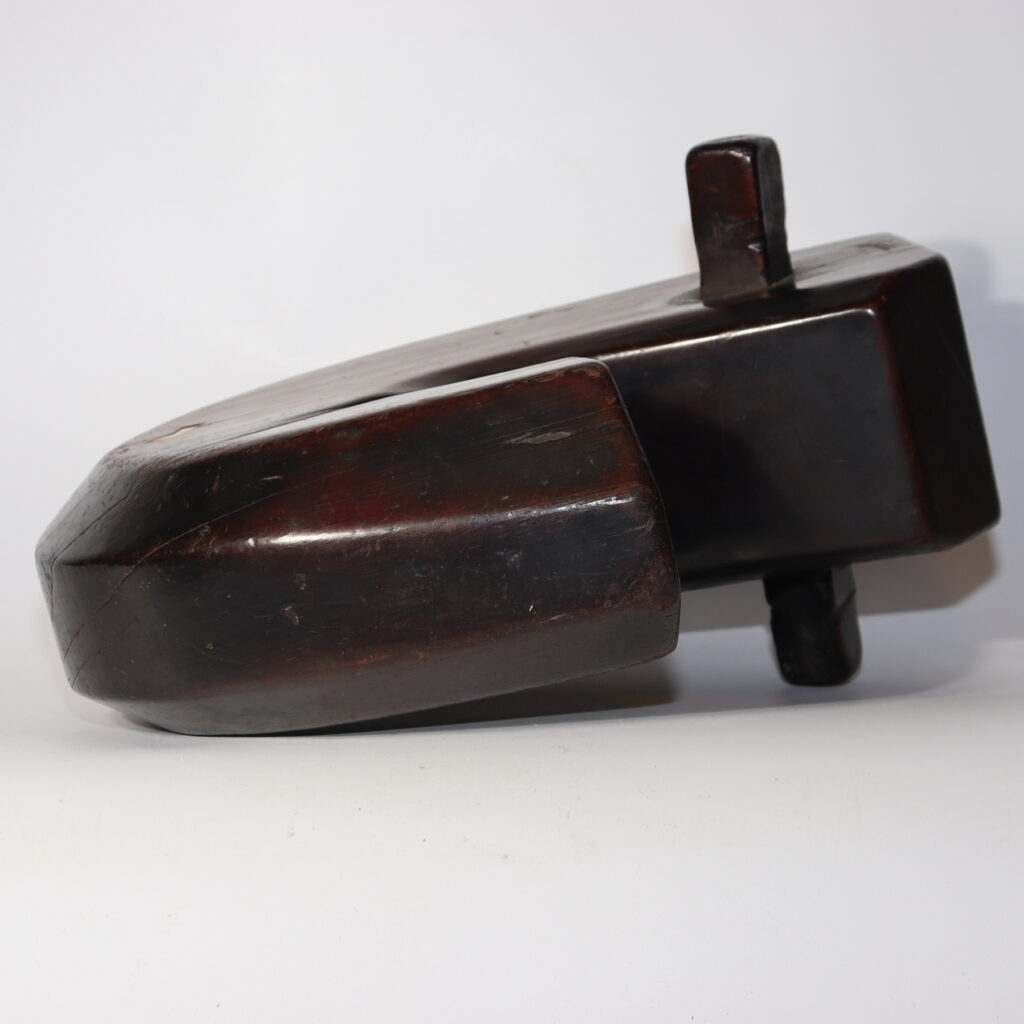
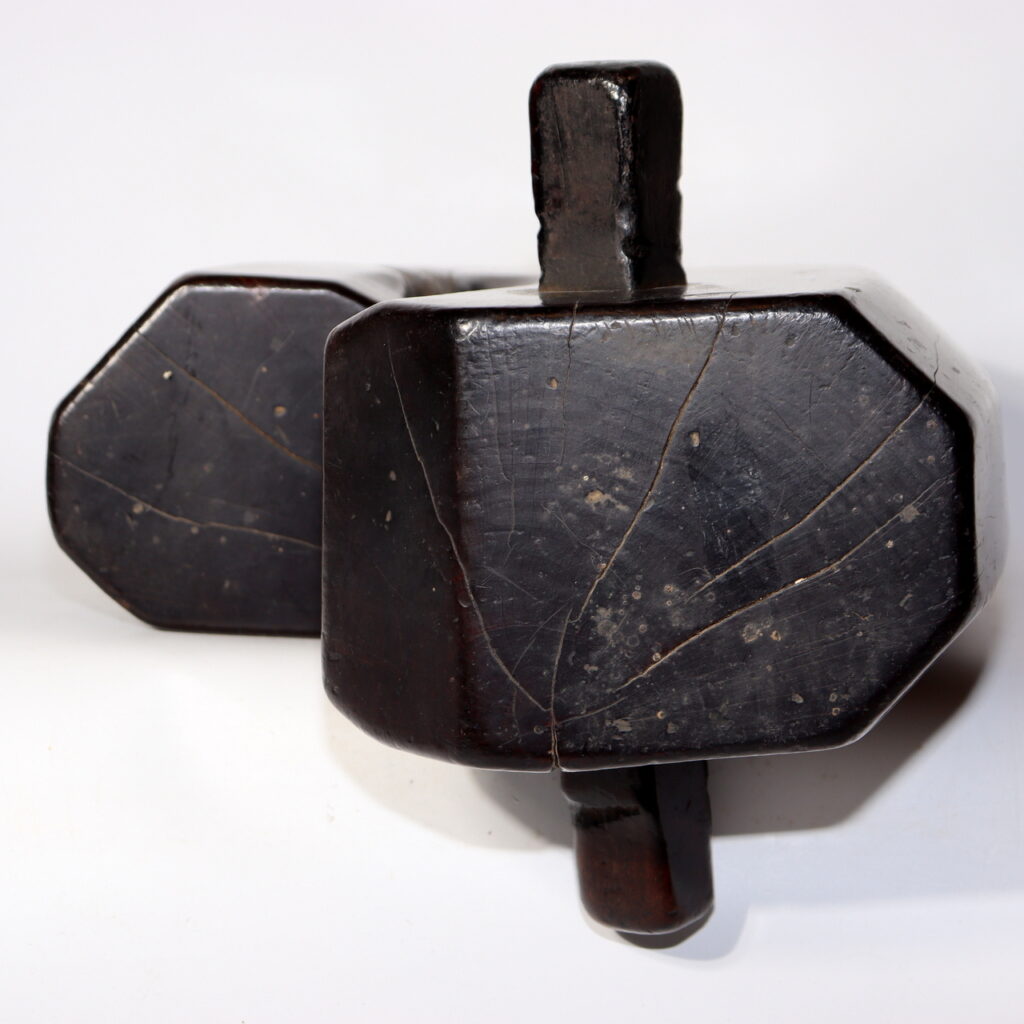
In the heart of the traditional Japanese home, the irori—a sunken hearth—was more than a place of warmth and cooking. It was a cultural center, a place where stories were told, meals shared, and tools aged gracefully over time. Among those tools, the sorakagi holds a special place—both humble and artful in its utility.
This antique wooden sorakagi, dating from the Meiji era, is a rare find that brings together function, folk aesthetics, and spiritual symbolism. Its rich patina and butterfly-shaped inlays tell stories of time, tradition, and the quiet beauty of daily life.
The Story Behind This Item
Unlike the more commonly known jizai kagi, the sorakagi is more compact, lighter in curvature, and often handmade by rural craftsmen. Suspended above the irori, it was used to hang kettles and pots at an adjustable height—essential for temperature control when cooking over an open flame.
This particular piece shows signs of long use: charred edges, smoothened by years of hanging above fire, and delicate cracks that speak not of damage, but of time. What makes it truly special, however, is the use of bone inlays, shaped like butterflies, embedded using the chigiri technique. This method was not just a form of reinforcement, but an act of care—both functional and symbolic, expressing the idea of “joining” or “bonding” that resonates deeply in Japanese folk philosophy.
Highlights and Unique Features
- Authentic Meiji-era sorakagi, used in traditional Japanese homes above irori hearths
- Crafted from wood, showing natural burnishing and patina from hearth exposure
- Features butterfly-shaped bone inlays, applied using the traditional chigiri repair method
- Visible cracks from drying, but remains structurally sound and fully intact
- A unique piece combining utility, spirituality, and folk craftsmanship
This sorakagi is not only a tool—it is a sculpture shaped by fire and time.
Why It Matters to Collectors
For collectors of Japanese antiques, particularly those fascinated by Meiji-period tools, this piece is a masterclass in mingei (folk craft). It embodies the Japanese aesthetic of wabi-sabi, where imperfection and impermanence are cherished.
It is also a valuable artifact for scholars or enthusiasts interested in traditional Japanese architecture, domestic life, and the evolution of culinary culture. The presence of chigiri inlays reflects a philosophy of repair that shares a lineage with kintsugi, making it a wonderful companion piece for ceramic or wooden wares bearing similar restorations.
Conclusion and Where to Find It
Whether displayed in a tea room, a museum setting, or a wabi-sabi-inspired interior, this Meiji-era sorakagi will serve as a quiet yet profound storyteller—bridging the gap between function and form, hearth and home.
If this item has already been sold, explore more from our curated collection:
🔗 Browse Japanese antiques at Koedo Sun Art